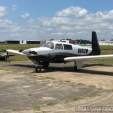Do You Use Speed Brakes for Anything Unusual?
-
Members Online
- MikeOH
- Paul Thomas
- anthonydesmet
- AJ88V
- Planegary
- tony
- fmg85
- mhoffman
- DCarlton
- EricJ
- MB65E
- TCC
- slowflyin
- DonMuncy
- Ragsf15e
- PT20J
- Marc_B
- atpdave
- exM20K
- ElkoRandy20J
- Aleksei
- MatthiasArnold
- M20F
- 1980Mooney
- Utah20Gflyer
- N201MKTurbo
- Samir13k
- VetRepp
- ta2too
- Knee_draggerR1
- mgtrevor
- Taz
- patriot3300
- Bob B
- ericrynehess


Recommended Posts
Join the conversation
You can post now and register later. If you have an account, sign in now to post with your account.